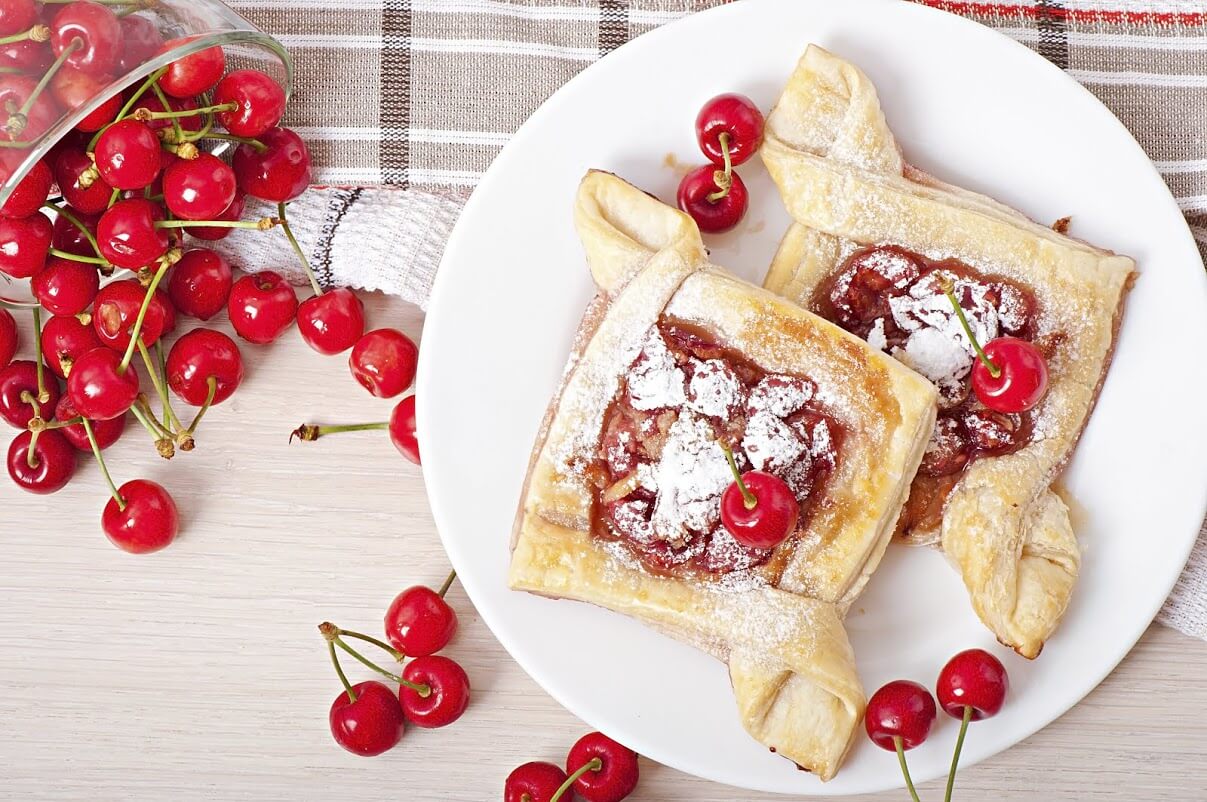How To Make Danishes
Danishes are one of those breakfast foods that really shouldn’t be able to pass for your first meal of the day considering how sweet and yummy and resembling of a dessert they is. But alas, in this lovely world they certainly are a part of morning cuisine deeming us very lucky people. And we have the Danish, respectively, to thank for this lovely pastry. One of the best things about a Danish that everyone can agree on is the fact you can pretty much slather or stuff it with just about anything and it will still be tasty. Apple strawberry, raspberry, pear, mango, passion fruit, cheese, Nutella, chocolate, we think you get the picture. If it’s slightly sweet and you think it will work, it probably will. And that buttery, flaky pastry…that’s what makes the whole thing.
In this webinar with our pastry and baking arts expert, we show you how to make your own danish pastries. If you love breakfast and more specifically breakfast sweets, this is a recipe you’re going to want to learn.
Dough
1 tbsp active dry yeast
20 oz AP flour, divided
4 oz granulated sugar
4 fl oz water, warm
2 eggs, room temperature
1 tsp salt
1 tsp vanilla extract
½ tsp cinnamon, ground
1.5 oz unsalted butter, melted
1 lb unsalted butter, cold
Egg wash as needed
- In a large bowl, stir together the yeast and 12 ounces (for 36 pastries) or 6 ounces (for 18 pastries) of the flour. Add the sugar, water, milk, eggs, salt, vanilla, cinnamon and melted butter. Stir until well combined.
- Add the remaining flour gradually, kneading the dough by hand or with a mixer fitted with a dough hook. Knead until the dough is smooth and tacky to the touch, approximately 2 to 3 minutes.
- Place the dough in a bowl that has been lightly dusted with flour. Cover and refrigerate for 1 to 1.5 hours.
- Prepare the remaining butter while the dough is chilling. Start by sprinkling flour over the work surface and placing the cold butter on the flour. Then pound the butter with a rolling pin until it softens. Using a pastry scraper or the heel of your hand, knead the butter and flour until the mixture is spreadable. The butter should still be cold. If the butter begins to melt, refrigerate it until firm. Keep the butter chilled until the dough is ready.
- On a lightly floured surface, roll out the dough into a large rectangle, about ½ inch thick. Brush away any excess flour.
- Spread the chilled butter evenly over two-thirds of the dough. Fold the unbuttered third over the center and then fold the buttered third over the top. Press the edges together to seal in butter.
- Roll the dough into a rectangle about 12 inches by 18 inches. Fold the dough in thirds as before. This rolling and folding (called a turn) must be done a total of six times. Chill the dough between turns as necessary. After the final turn, wrap the dough well and let sit for at least 4 hours or overnight.
- Shape and fill the Danish dough as desired. Place the shaped pastries on a paper-lined baking sheet and proof for approximately 15-20 minutes.
- Brush the pastries with egg wash and sprinkle lightly with sugar if desired. Bake at 400F for 5 minutes. Decrease the oven temperature to 350F and bake until light brown, approximately 12 to 15 minutes.
Filling
24 oz cream cheese
4 oz granulated sugar
3 eggs
1 tsp lemon zest, finely grated
1 tbsp vanilla extract
3 oz AP flour
- In a bowl of a mixer fitted with a paddle attachment, blend the cream cheese and the sugar on low speed until smooth.
- Scrape down the bowl and gradually add the eggs.
- Stir in the lemon zest and vanilla. Fold in the flour.
- Fill the pastries with this mixture before baking.


